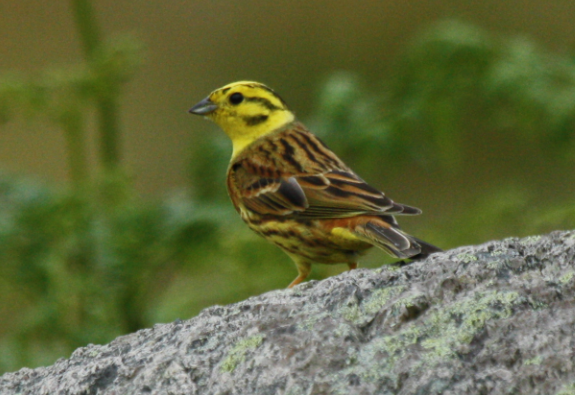..................... ........... ........ ..... ... . . . . . .
Snowdonia
Suoʍpouıɐ
Part of the stay in Snowdonia involved two days with the tour leader in North Wales known as Gareth Jones. This was the second day, and only a "half day" tour consisting of about 5 hours starting from around 8am.
With yet more misses on the goosanders and pied flycatchers, the morning was quite quiet. It was generally devoid of bird life all over, perhaps a reference to the damp, wet and soggy weather which was not especially satisfying to any terrestrial creature other than a snail.
The ring ouzel quarry location with the Welsh name was covered in a heavy layer of fog. There are many old stories of people becoming lost in the mist on the moors, and the setting was certainly of the same league. Though the atmosphere was unique, it did not really help in the search for the target bird and probably would not help if we did manage to encounter it. There was no ring ouzel to be heard, but this mist wren did not find the lack of visibility to be a hindrance and continued singing.
 |
| It could easily be coral or seaweed. But its not. Its a parsley fern, an exclusively alpine species found in few other places in the UK. |
 |
| Do the ghosts of Cŵn Annwn haunt this place in the fog? Maybe the Hound of the Baskervilles? |
Retiring further back down the mountains we checked for yellowhammers in a secretish field.
A yellowhammer showed well at a certain location in a fielded area and sat within 2 metres without rest. It was still there when we moved on. The yellow bunting as it could be called is a declining species all over the UK, particularly so in Wales. Since I had seen many I probably didn't appreciate it as much as a local Welsh birder would have, but it is a different subspecies than that found in southern England. The subspecies here is E. c. caliginosa, a subspecies found over Wales, Ireland, Scotland and northern England. Though widespread and not endemic to Wales, it is still nothing to shrug about. Its a pretty bird to look at too.
 |
| Yellowhammer. |
 |
| Lesser Redpoll. |
 |
| That female lesserpoll probably sucked all of your feeling and awe that you gained from looking at the bright vibrant colours of the yellowhammer, so have this male lesserpoll to compensate. |
 |
| A late instar nymph. Colonies of these insects are hard to come by. There were no adults here, perhaps suggesting that these nymphs are all recently hatched from eggs laid the previous year. |
 |
| Well at least its better than the osprey and black grouse images. |
 |
| I guess you could say I was "well chuffed" to see them. Yes, I think I need to find a whydah list of bird-themed puns. |

No comments:
Post a Comment